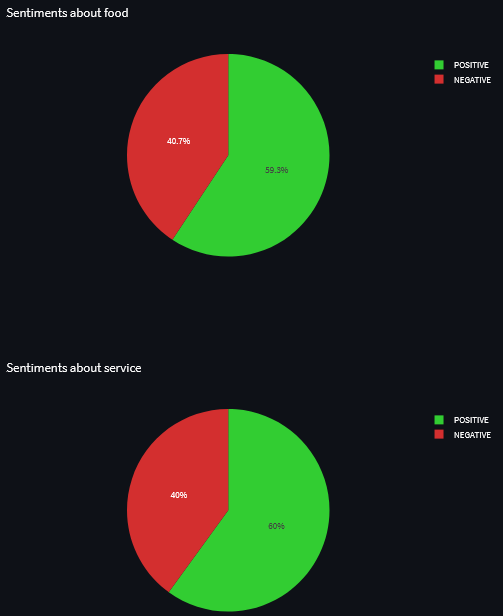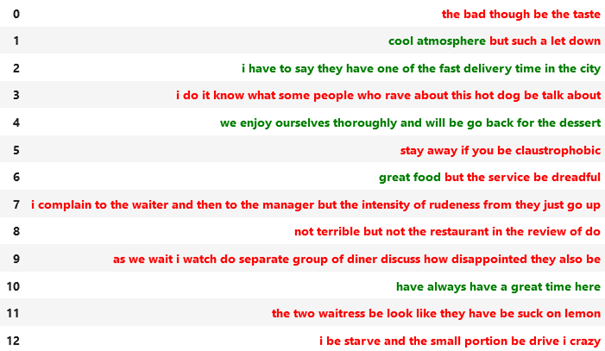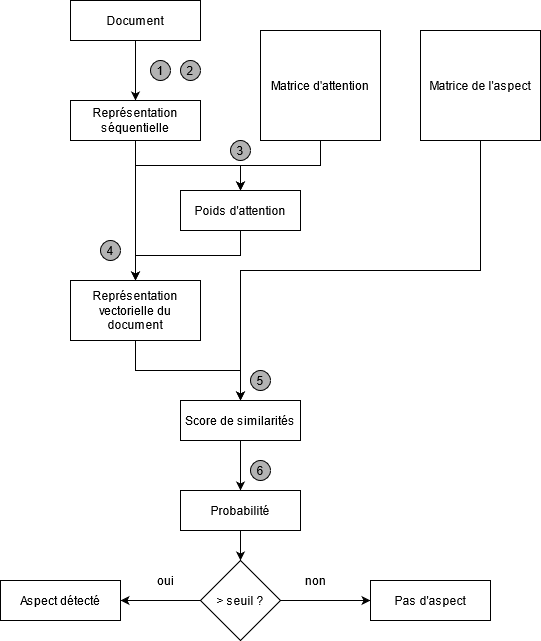Summarizing the opinion of a batch of reviews by producing an instant views showing topics and sentiments.
Provides a visual summary of a batch of reviews. Given the url of a restaurant, this module scraps a list of reviews and estimates the sentiment. Each sentence is cut to isolate a sentiment in order to handle multi-opinionated texts. Aspects/Topics are detected within each fragment.
- Install Docker
- Install docker-compose
- Clone this repository :
git clone https://github.com/vesran/SumOp.git - Navigate to
.../sumop - Run
docker_compose up - Go to
localhost:8501to see the dashboard.
This project runs with Streamlit and shows the sentiments for each aspect from a chosen restaurant from Yelp.
The link to the reviews to collect can be customized in the sumop/params.py file under the URL_FORMAT variable.
Only Yelp can be parsed.
Under sumop/scraper, add scripts to scrap the desired website. Data should be collected into a text file, each comment separated by \n.
Change the PATH_TO_SAVE_SCRAPED_COMMENTS variable in sumop/params.py to indicate the new text file you have defined as well as the link to the website's article URL_FORMAT (# indicates page number but it is only used to scrap reviews so you can customize this variable as you wish).
Next, run the app again.
The list of aspects is defined in the sumop/params.py file under the variable ASPECTS. This variable refers to a dictionary which maps the aspects to the minimum probability threshold which consider that a review is actually talking about the specified aspect.
Experiments should be conducted to find the optimal threshold values. If not possible, the value 0.4 is suggested. These values are independent of each others.
The dashboard was built using Streamlit and Plotly. The script responsible of the dashboard is sumop/dashboard.py.
One main assumption can be underlined after analysing multiple datasets : sentiments are usually grouped within a sentence (ie a sentence starts by positive statements and ends with a negative review). In order to estimate the sentiment within each aspect, a NN model is trained to estimate the polarity of each word in a sentence. It allows us to segment sentences with multiples sentiments. Each fragment of text may several aspects but one sentiment. From now, it's only a matter of detecting aspects.
For more information, you can have a look at the PDF document.
Used a modiified version of the aspect detection procedure by Tulken and Cranenburgh (2020).
- Code
- Add anasent notebook
- Dashboard
- Docker
- Add pdf



